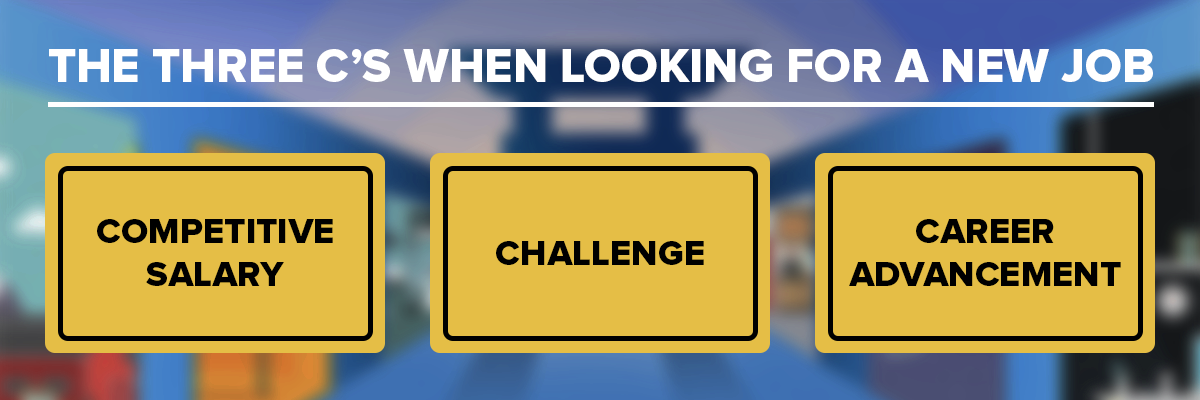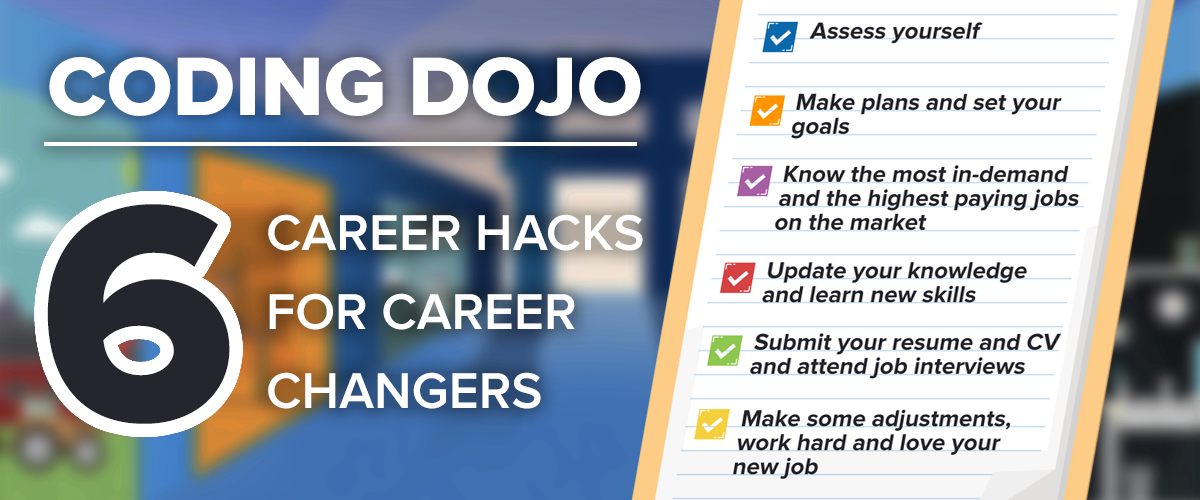“I’m not a jack of all trades; I’m a master of many. I don’t feel there is anything I can’t do if I want to.”—Evel Knievel
The only constant in the digital world is change—learning only one technology or one skill isn’t enough to survive in the tech industry, let alone thrive.
Coding Dojo knows that, and that’s why we offer a 14-week, 3 full stack bootcamp for students of all backgrounds— helping them become versatile and self-sufficient developers.
Popularity Trend Of Programming Languages
Ever since Konrad Zuse created the first high-level programming language “Plankalkül” between 1942 and 1945, programming languages have come so far. But before we go more in-depth on studying stacks, let’s look at the number of software engineers in the US.
 In 2017, Daxx.com claimed that there are 4.2 million people who can write or read codes in the US on a daily basis.
In 2017, Daxx.com claimed that there are 4.2 million people who can write or read codes in the US on a daily basis.
Companies shift their openings towards new technologies, opportunities, and trends to enhance the current programming ecosystem. Kris Ekenes, Software Development Engineer at Skilljar and former Coding Dojo instructor, gave some insight into how different regions can affect programming language popularity: “For each major city, the most popular programming language will be different. This is likely due to a few factors – the highest impact being the presence of certain large companies.”
Parallel to job trends and market demands in the US, Coding Dojo designed an adaptable curriculum learning platform that uses up-to-date technologies and highly specialized course structure to help students in their future endeavors.
Why Learn Full Stack in 3 Languages
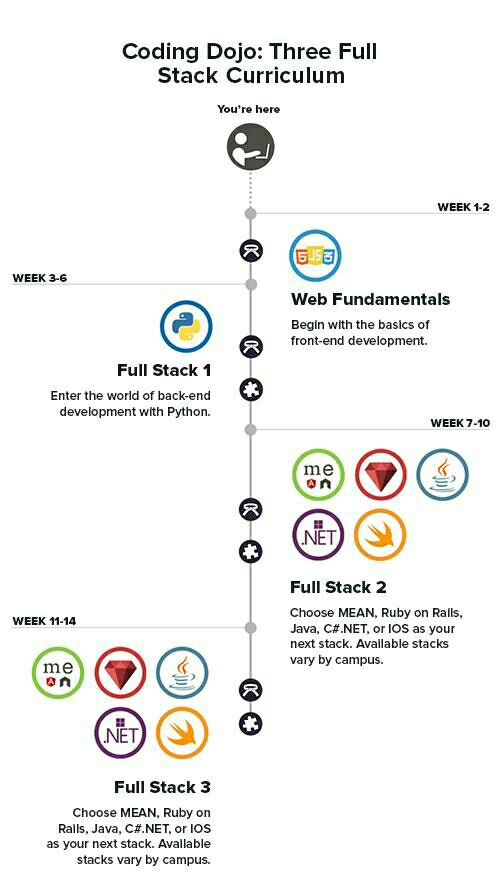 Donovan An, our lead instructor in Seattle, said “self-sufficiency, marketability, and ROI” are the three primary reasons why learning three full stacks in our bootcamp is essential. Coding Dojo provides the necessary tools and learning environments to foster collaboration and transform neophyte developers into highly skilled, sought-after developers.
Donovan An, our lead instructor in Seattle, said “self-sufficiency, marketability, and ROI” are the three primary reasons why learning three full stacks in our bootcamp is essential. Coding Dojo provides the necessary tools and learning environments to foster collaboration and transform neophyte developers into highly skilled, sought-after developers.
If you visit our website, you’ll see that we teach six of 2018’s most in-demand programming languages based on data gathering conducted by TIOBE Index, a programming community index.
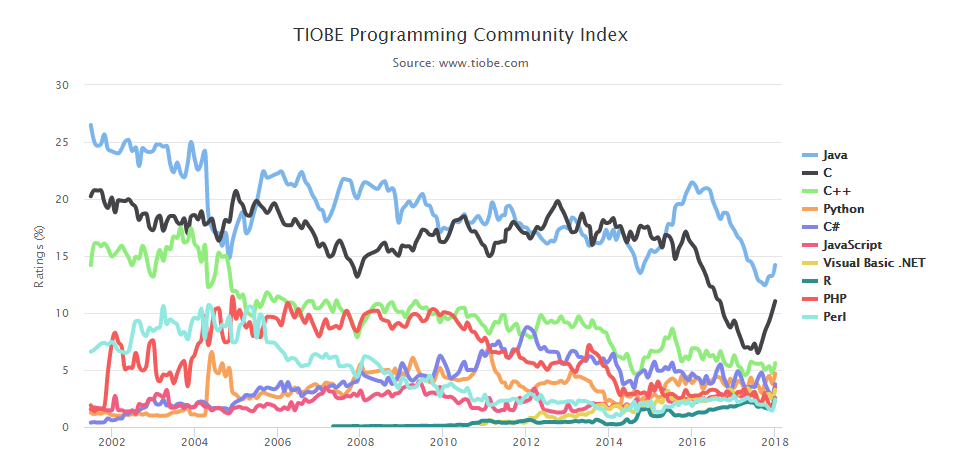
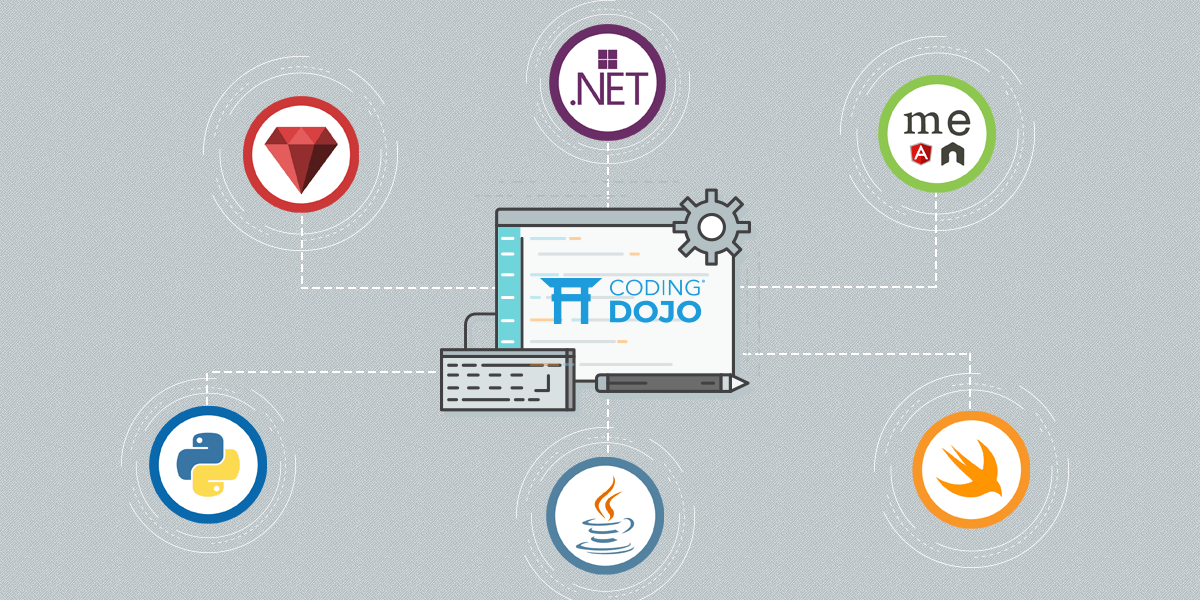
Three Full Stacks VS. One Full Stack
“You can never understand one language until you understand at least two.”
—Geoffrey Willans
Programming is needed in almost every field–manufacturing, software publishing, finance and insurance, computer systems design and other related services. That makes the knowledge in programming one of the primary requirements of many businesses and companies.
Last January 2018, Coding Dojo released the result of their research on the different coding language requirements for job openings of the top 25 companies of Fortune 500.
Coding Dojo’s Head of Curriculum, Speros Misirlakis offers some advice:“While specific jobs might focus on a particular language, this research shows that a single language could be a long-term dead-end. Aspiring and existing developers must learn coding is common building blocks and ultimately become fluent in multiple languages to have the adaptability and flexibility for a successful career.”
Coding Dojo aims to help new and existing developers become familiar and fluent in many coding languages. Many high-level programming languages have lexical similarities like Python, Visual Basic, Delphi, Perl, PHP, ECMAScript, Ruby, C#. To know more than one programming language gives developers the advantage of unlocking doors of opportunities that are otherwise close to developers who have only mastered one coding language. Having the skill to learn new and different programming language helps you avoid that long-term dead-end but instead, pave your way towards success.
Advantages and Disadvantages of Three Full Stack Developer and One Full Stack Developer
According to Bacancy Technology, a full stack developer is a jack of all trades and a master of all. They can do both back-end and front-end works. However, is three full stack developer better than one full stack developer?
| 3 Full Stack Developer: Generalist | 1 Full Stack Developer: Specialist | ||
| Advantages | Disadvantages | Advantages | Disadvantages |
|
|
|
|
As we can see from the table above, the advantages of three full stack developers outnumbered those of one full stack developers.
Proper preparation prevents poor performance. Like a warrior in a battle, full stack developers must be well-equipped through intensive training in programming to take control of the digital world and win the war against errors, bugs, and glitches. They become unstoppable because they have an arsenal of weapon of broad experience and an unlimited supply of knowledge for they have mastered the art of programming.
If you’re interested in becoming a three full stacks developer, come and visit our website at www.codingdojo.com and see how we can help you achieve your goal.

